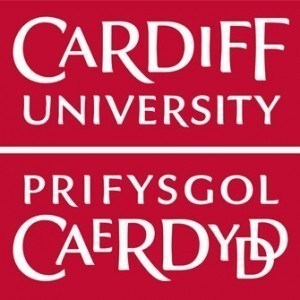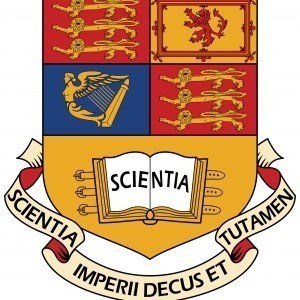Photos of university / #cardiffuni
The MSc in Geodynamics at Cardiff University offers students a comprehensive and in-depth understanding of the physical processes that shape our planet. This postgraduate program is designed for those interested in Earth sciences, with a particular focus on the dynamic processes occurring within the Earth's interior and surface. Throughout the course, students will explore a range of topics including tectonics, mantle convection, volcanism, earthquake processes, and planetary dynamics. The curriculum combines theoretical lectures, practical laboratory sessions, and fieldwork opportunities to provide a well-rounded educational experience.
Students will have access to state-of-the-art facilities such as advanced geophysical and geological laboratories, enabling hands-on experience with modern research tools and techniques. The program also emphasizes the development of analytical skills and quantitative methodologies necessary for interpreting complex geological data. Research projects and dissertation work form a core part of the MSc, allowing students to apply their knowledge to real-world problems under the supervision of experienced academics and industry professionals.
This program prepares graduates for careers in academia, research, environmental consulting, resource exploration, and governmental agencies involved in natural hazard assessment and mitigation. Cardiff University's location offers unique access to diverse geological features and active tectonic zones, enriching the learning environment through field trips and collaborative projects. The MSc Geodynamics is suitable for individuals with a background in geology, geophysics, or related disciplines who are eager to deepen their understanding of Earth's interior processes and contribute to solving contemporary geosciences challenges. Join this dynamic program to advance your career in Earth sciences and become part of a vibrant research community dedicated to understanding the Earth's dynamic nature.
The Geodynamics MSc program at Cardiff University offers an in-depth exploration into the dynamic processes shaping our Earth's interior and surface. Designed for students with a strong foundation in geosciences, this program provides a comprehensive understanding of the physical mechanisms driving tectonic movements, volcanic activity, seismic phenomena, and mantle convection. Throughout the course, students will engage with both theoretical concepts and practical skills, utilizing state-of-the-art laboratories and computational tools to analyze geophysical data.
The curriculum covers a wide range of topics, starting with fundamental principles of Earth sciences, including mineral physics, plate tectonics, and geophysical methods. Advanced modules focus on seismic imaging, geothermal energy, and the role of geodynamics in natural hazards. Students will have opportunities to develop research projects that address current challenges in understanding Earth's internal dynamics, such as earthquake prediction, volcanic risk assessment, and the impact of climate change on geological processes.
The program emphasizes interdisciplinary approaches, integrating geophysics, geology, and computational modeling. Students will learn to interpret seismic tomographs, gravitational and magnetic anomalies, and other geophysical datasets. Practical skills are developed through fieldwork, simulations, and data analysis workshops, preparing graduates for careers in academia, industry, or governmental agencies involved in natural resource management and disaster mitigation.
Cardiff University's strong links with research institutions and industry partners provide students with valuable networking opportunities and exposure to cutting-edge developments in geodynamics. The program also encourages critical thinking, problem-solving, and independent research, culminating in a dissertation that contributes original insights to the field. Graduates of the MSc in Geodynamics will be well-equipped to pursue further academic research or embark on professional careers in geophysical consultancy, environmental consultancy, or broader Earth sciences sectors.
The MSc in Geodynamics at Cardiff University requires applicants to have a good second-class Honours degree or equivalent in Earth Sciences, Geology, Geophysics, or a related discipline. Candidates with relevant industrial experience may also be considered. Prospective students are expected to demonstrate a strong background in core geological and geophysical principles, along with proficiency in physical sciences and mathematics. Prior knowledge of geophysical data analysis, seismic methods, and computational skills is advantageous. Applicants whose first language is not English must provide evidence of English language proficiency through tests such as IELTS (typically a minimum score of 6.5 overall, with at least 6.0 in each component). The selection process emphasizes academic performance, relevant experience, and motivation for pursuing studies in geodynamics. International students are encouraged to apply and may be required to submit additional documentation, such as certified translations of their academic credentials. The programme aims to equip students with comprehensive knowledge of Earth processes, including plate tectonics, mantle convection, seismic imaging, and the evolution of the Earth's crust. Students will engage in advanced coursework covering structural geology, geophysical techniques, numerical modeling, and data interpretation. Practical skills are developed through laboratory work and data analysis exercises using industry-standard software. A research project culminates the MSc programme, providing students with hands-on experience in analyzing real-world geodynamic phenomena. The programme's admission criteria seek to ensure that students possess the analytical and technical skills necessary for successful independent research and professional careers in geosciences. Applicants should submit a completed application form, academic transcripts, references, a personal statement outlining their interest and goals, and any required standardized test scores. The course duration is typically one year full-time, with opportunities for part-time study subject to eligibility. International students are advised to consult the university's specific visa and visa support requirements before application. The student community benefits from Cardiff University’s extensive resources, including access to geological archives, laboratories, and seismic data repositories.
The financing of the Geodynamics MSc program at Cardiff University involves multiple aspects aimed at making higher education accessible and affordable for both domestic and international students. The program benefits from a variety of funding opportunities, including scholarships, bursaries, student loans, and work placements, designed to support students financially throughout their studies. Cardiff University offers several scholarships specifically for postgraduate students, which are awarded based on academic merit and, in some cases, financial need. These scholarships may cover partial or full tuition fees and are highly competitive. Additionally, students are encouraged to explore external funding sources such as government sponsorships, national research councils, and international scholarship programs which support students pursuing specialized fields like geodynamics.
Student loans are available through the UK government, providing financial support to eligible domestic students to cover tuition fees and living expenses. International students may need to demonstrate additional financial resources or secure private funding to cover their tuition and accommodation costs. The university also offers guidance and support on funding options and financial planning to help students manage their budgets effectively. Employment opportunities during the academic year, such as research assistantships or teaching assistantships, may provide additional income and practical experience relevant to the field. The program's overall financing strategy aims to reduce financial barriers, ensuring that talented students from diverse backgrounds can access education in geodynamics. Cardiff University maintains a transparent process for fee payments, financial aid application procedures, and advice on funding deadlines, making it easier for students to plan their finances accordingly.
The MSc in Geodynamics at Cardiff University offers an in-depth exploration of the physical processes governing the Earth's interior and surface. This programme is designed to equip students with a comprehensive understanding of the dynamic systems that shape geological features and influence phenomena such as plate tectonics, seismic activity, volcanic eruptions, and mantle convection. Throughout the course, students engage with advanced topics including mineral physics, geophysical methods, and numerical modelling techniques, enabling them to analyze and interpret complex geodynamic data.
Lectures are complemented by practical laboratory sessions, fieldwork, and a significant research project, fostering hands-on experience and critical thinking skills. The curriculum is structured to develop proficiency in various observational and computational tools used in contemporary geodynamics research. Students have access to state-of-the-art laboratories and computational facilities, supporting their investigations into Earth's internal processes.
The programme also emphasizes interdisciplinary approaches, encouraging collaboration across geosciences, physics, and computer science departments. It prepares graduates for careers in academia, government agencies, and industry sectors such as natural resource exploration and environmental consultancy. The MSc typically lasts one year full-time, with options for part-time study, providing flexibility for students with diverse backgrounds.
Graduates of the MSc in Geodynamics at Cardiff University will gain a solid foundation in the principles of Earth dynamics and practical skills in data analysis, simulation, and scientific communication. The programme's research-driven ethos links students with active research groups working on cutting-edge issues related to Earth's evolution, seismic hazards, and planetary processes. This unique combination of theoretical knowledge and practical expertise makes it a competitive choice for those seeking to advance their careers in geosciences.
The faculty involved in delivering this programme are recognized experts in geodynamics, offering mentorship and fostering an innovative learning environment. Students benefit from Cardiff's reputation as a research-intensive university, with numerous opportunities for networking, presenting research, and participating in scientific conferences. Graduates of this programme are well-positioned to contribute to scientific advancements and policymaking related to Earth sciences.
Overall, the MSc in Geodynamics at Cardiff University provides a rigorous, engaging educational experience that combines theory, practical skills, and research opportunities, preparing students for professional roles or further academic study in Earth sciences and related fields.





